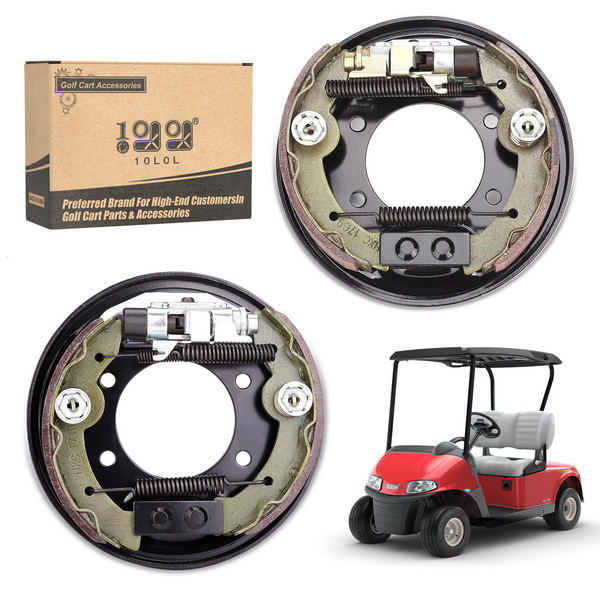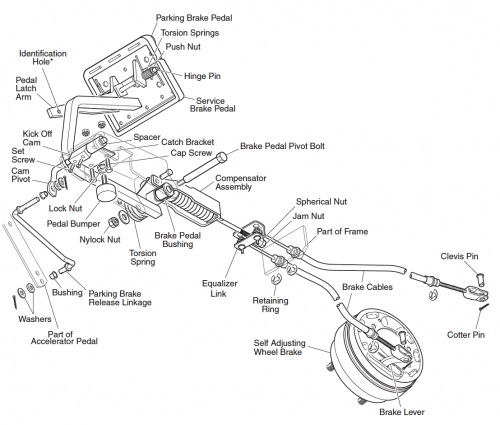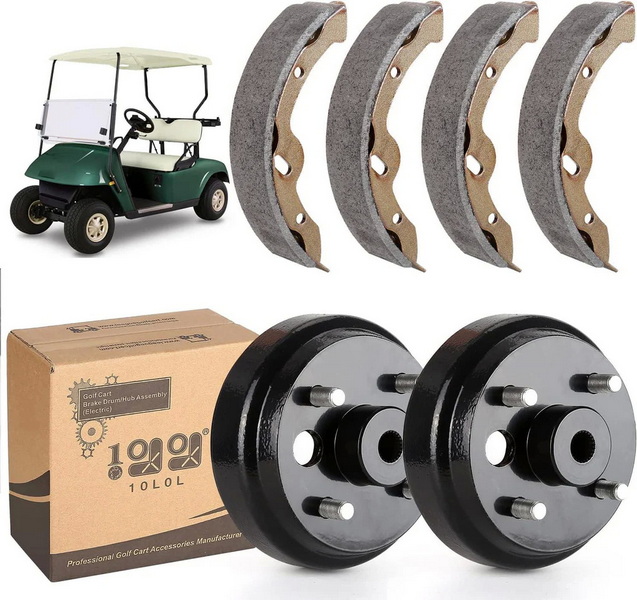Content Menu
● Understanding Electric Golf Cart Brakes
>> Mechanical Brakes
>> Regenerative Braking
● How Electric Golf Cart Brakes Function
● Advantages of Electric Golf Cart Brakes
● Maintenance of Electric Golf Cart Brakes
● Conclusion
● FAQ
>> 1. What types of brakes do electric golf carts use?
>> 2. How does regenerative braking benefit electric golf carts?
>> 3. How often should I maintain my golf cart brakes?
>> 4. Can I replace golf cart brake parts myself?
>> 5. What signs indicate that my golf cart brakes need servicing?
Electric golf carts have become increasingly popular for their efficiency, ease of use, and eco-friendliness. A crucial component of these vehicles is their braking system, which ensures safety and control while driving. This article will explore how electric golf cart brakes work, the different types of braking systems used, and their maintenance.

Understanding Electric Golf Cart Brakes
Electric golf carts typically utilize two primary types of braking systems: mechanical brakes and regenerative brakes. Each system plays a vital role in the overall functionality of the cart.
Mechanical Brakes
Mechanical brakes are similar to those found in traditional vehicles. They rely on friction to slow down or stop the cart. The two main types of mechanical brakes used in electric golf carts are:
- Drum Brakes: These consist of brake shoes that press against the inner surface of a drum when the brake pedal is engaged. This creates friction, which slows down the wheels.
- Disc Brakes: More commonly found in modern carts, disc brakes use calipers to squeeze brake pads against a disc or rotor, providing more effective stopping power and better heat dissipation than drum brakes.
Regenerative Braking
Regenerative braking is an innovative feature that enhances the efficiency of electric golf carts. When the driver releases the accelerator pedal, the electric motor switches to generator mode. This process converts kinetic energy back into electrical energy, which is then stored in the batteries for later use.
- Energy Recovery: The regenerative braking system captures energy that would otherwise be lost as heat during braking, extending the driving range of the cart.
- Smoother Deceleration: This system allows for smoother deceleration, making it easier for drivers to control their speed.
How Electric Golf Cart Brakes Function
The operation of electric golf cart brakes involves several steps:
1. Engaging the Brake Pedal: When the driver presses the brake pedal, it activates either the mechanical or regenerative braking system.
2. Friction Application (Mechanical Brakes): If mechanical brakes are used, brake shoes or pads press against drums or discs to create friction that slows down the wheels.
3. Energy Conversion (Regenerative Braking): In regenerative systems, instead of using friction alone, the motor acts as a generator. This process not only slows down the cart but also recharges the batteries by converting kinetic energy back into electrical energy.
4. Stopping Power: The combination of both systems provides effective stopping power, ensuring safety during operation.

Advantages of Electric Golf Cart Brakes
Electric golf cart brakes offer several benefits over traditional braking systems:
- Reduced Wear and Tear: Regenerative braking reduces reliance on mechanical friction brakes, leading to less wear and tear on components and longer service life.
- Energy Efficiency: By recovering energy during braking, electric carts can extend their range and reduce battery consumption.
- Smoother Operation: The ability to modulate speed through regenerative braking provides a smoother driving experience compared to traditional friction-only systems.
Maintenance of Electric Golf Cart Brakes
Proper maintenance is essential for ensuring that electric golf cart brakes function effectively. Here are some maintenance tips:
- Regular Inspections: Check brake pads and shoes for wear regularly. Replace them if they show signs of significant wear or damage.
- Brake Fluid Checks (for Hydraulic Systems): Ensure that hydraulic brake fluid levels are adequate and replace it as necessary to maintain effective braking performance.
- Cleaning Components: Keep brake components clean from dirt and debris to prevent any hindrance in performance.
- Battery Maintenance: For regenerative systems, ensure that batteries are well-maintained as they play a crucial role in energy recovery during braking.
Conclusion
Understanding how electric golf cart brakes work is essential for any owner or operator. With advancements in technology, these braking systems not only provide safety but also enhance efficiency through features like regenerative braking. Regular maintenance ensures that these systems remain effective and prolongs the lifespan of your golf cart.

FAQ
1. What types of brakes do electric golf carts use?
Electric golf carts typically use mechanical drum brakes or hydraulic disc brakes alongside regenerative braking systems for enhanced efficiency and safety.
2. How does regenerative braking benefit electric golf carts?
Regenerative braking recovers energy during deceleration, converting it back into electrical energy for battery storage, which extends driving range and improves energy efficiency.
3. How often should I maintain my golf cart brakes?
Regular inspections should be conducted every few months or after significant use. Brake pads should be checked for wear and replaced as necessary to ensure optimal performance.
4. Can I replace golf cart brake parts myself?
Yes, many golf cart owners can replace brake components with some mechanical knowledge. However, if you are unsure, it's best to consult a professional mechanic or refer to your owner's manual for guidance.
5. What signs indicate that my golf cart brakes need servicing?
Signs include unusual noises when braking, decreased stopping power, vibrations during braking, or warning lights on your dashboard if equipped with electronic monitoring systems.










































